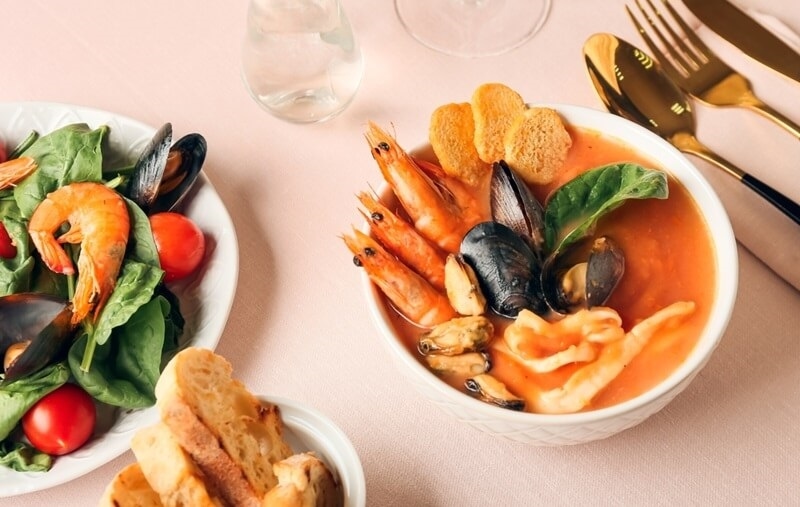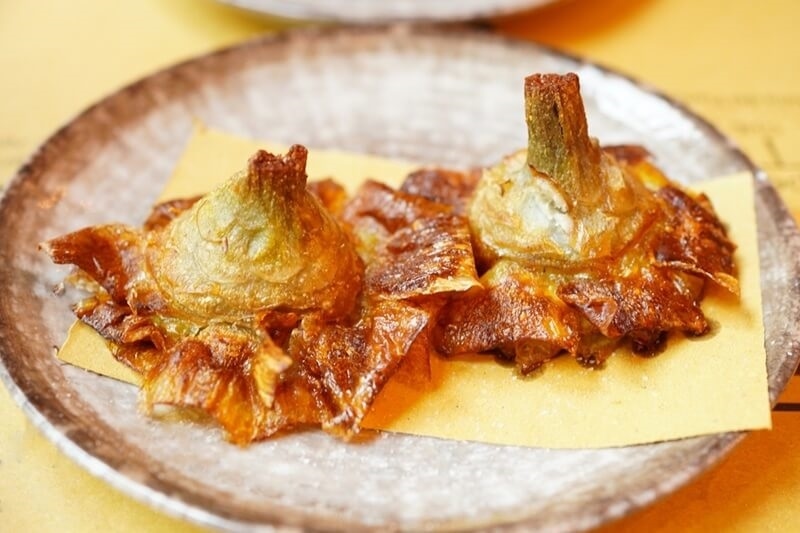
Food is memory. It’s emotion, ancestry, and identity rolled into a single bite. And few places capture that truth better than Italy — a land where meals are storytelling in motion. But behind the country’s familiar flavours of pasta, olive oil, and espresso lies another, quieter tradition: the Jewish one.
Taking part in Jewish food tours Italy isn’t just about tasting kosher dishes. It’s about exploring centuries of survival, migration, and fusion. From Roman artichokes to Venetian sweets, each recipe tells the story of resilience — how Jewish communities adapted their faith through food, across borders and generations.
So, if you’re planning a culinary trip that’s meaningful as much as it’s delicious, here’s why Italy might just surprise you.
Most travellers come to Italy for the classics: pizza in Naples, risotto in Milan, tiramisu in Venice. Yet tucked inside these same regions is a different kind of kitchen — one where olive oil replaces butter, where Sabbath loaves rise slowly, and where recipes trace back to ancient diaspora routes.
That’s what makes Jewish food tours Italy so special. They peel back the layers of Italian food to reveal another culture woven within. Think of it as eating history — each dish a chapter, each flavour a storyteller.

No city represents Jewish life in Italy quite like Rome. The Jewish community here is among the oldest in Europe, dating back over 2,000 years. And the flavours they’ve created over centuries are unforgettable.
One of the best-known dishes? Carciofi alla Giudia — Jewish-style fried artichokes. Crispy on the outside, soft at the heart, they’re an iconic example of jewish heritage food italy, born in the city’s old ghetto but now celebrated everywhere.
Food tours in Rome often start in the Jewish Quarter, winding past kosher butchers, small bakeries, and family-run trattorias. Visitors sample dishes like aliciotti con l’indivia (anchovies baked with endive) or frittura mista — light fried vegetables that follow kosher cooking principles. And of course, there’s dessert: crostata di visciole, a tart filled with sour cherries and ricotta, a beloved staple in the Roman-Jewish community.
To many, these are the best Jewish cuisine Rome has to offer — not just because of flavor, but because each bite holds a story of perseverance and pride.
Venice’s Jewish Ghetto, established in 1516, was the first of its kind. But even within its restrictions, creativity thrived. Venetian-Jewish food became a bridge between East and West — spices from traders, recipes passed through families, and desserts that travelled far beyond the lagoon.
One of the most famous is Sarde in Saor, sweet-and-sour sardines cooked with onions, vinegar, and pine nuts. Originally a way to preserve fish before refrigeration, it became a signature of Venetian-Jewish cooking.
And then there are the sweets — impade (almond cookies filled with jam) and fritole, fried dough balls dusted with sugar, often made for Purim. Visiting Venice’s kosher bakeries italy feels like stepping back in time, where traditions haven’t just survived — they’ve sweetened.
Florence might not shout its Jewish history the way Rome or Venice does, but it’s there — quietly infused into the Tuscan rhythm. Jewish merchants and families influenced trade, food, and local traditions long before the Renaissance.
Here, you’ll find dishes like cacciucco (a fish stew) adapted for kosher tables or pan di ramerino, a rosemary-scented bread often baked for holidays. Food tours in Florence sometimes pair these recipes with visits to the Great Synagogue, a breathtaking landmark with green domes gleaming above the rooftops.
It’s a reminder that Jewish heritage food Italy isn’t confined to one region — it’s woven through the country’s DNA.
Southern Italy carries traces of Sephardic Jewish influence, especially from communities that arrived after the Spanish expulsion in 1492. Their flavours fused with local Mediterranean staples — tomatoes, olives, citrus — to create something wholly new.
In Naples, Sicily, and Apulia, dishes like eggplant parmesan and certain pasta sauces bear hints of Jewish cooking methods: slow roasting, olive oil instead of lard, herbs that preserve flavor naturally.
For travellers on Jewish food culture travel, southern Italy feels less like discovery and more like reunion — a chance to taste how two cultures shaped one table.
Finding kosher food in Italy today is easier than ever, thanks to a growing appreciation for diversity and tradition. Cities like Rome and Milan have thriving kosher restaurants serving everything from classic ghetto recipes to fine dining.
The best way to explore them? A guided culinary walk that pairs bites with backstories. You’ll find restaurants that make handmade pasta with kosher supervision, cafés that bake chocolate croissants free of dairy, and delicatessens offering Israeli-Italian fusions.
Even beyond the major cities, kosher food experiences Italy are growing. Agritourism spots in Tuscany, for instance, now offer kosher-certified olive oil tastings and farm-to-table Shabbat dinners. It’s a sign that kosher doesn’t mean limited — it means intentional.
If there’s one constant across Jewish communities in Italy, it’s the bakery. Small, warm, and usually filled with laughter. From the tiny storefronts of the Roman Ghetto to the quiet alleys of Milan, kosher bakeries italy serve as both culinary and social hubs.
Here, recipes haven’t changed much in centuries. You’ll find chewy almond biscuits, biscotti ebraici, honey loaves, and fruit-filled tarts — each baked the way great-grandmothers once did. Tour guides often stop at these bakeries not just for samples, but to talk to owners who can recount family histories longer than most nations.
In Jewish tradition, bread and sweets often mark joy — from weddings to holidays. And tasting them in their original setting makes every bite feel personal.
Jewish cuisine in Italy isn’t static. It’s evolved with history — adapting under pressure, blossoming in peace. After centuries of exile and return, its recipes reflect both pain and celebration.
For travellers on Jewish food culture travel, that’s what makes these tours so emotional. They’re not just culinary adventures — they’re acts of remembrance. Each market visit, each cooking class, each shared meal tells of families who held on to faith through food.
You’ll taste influences from across the Mediterranean — Greece, Turkey, North Africa — layered with unmistakably Italian warmth. Together, they form a mosaic of identity that still feels deeply alive.
Many kosher food experiences italy go beyond eating — they invite you to cook. In Rome, you can join workshops where chefs teach centuries-old recipes passed down through families. In Venice, some tours combine cooking classes with local wine tastings (kosher, of course).
And then there are festivals. The annual Jewish Culture Festival in Milan or Jewish Week in Florence often feature food as the heart of their celebration — a bridge between communities. From cooking demos to Shabbat dinners open to all, they remind travellers that sharing food is sharing heritage.
Start with the big cities: Rome, Venice, Florence. Then, if you have time, explore southern gems like Lecce or Palermo. Book local guides who understand both the culinary and cultural layers — they’ll help you find hidden kitchens you’d never spot alone.
When travelling for Jewish food tours Italy, be curious. Ask questions. Talk to bakers, chefs, or even rabbis who oversee kosher certification. Each will have a story — sometimes joyful, sometimes bittersweet — but always real.
And yes, pace yourself. Between fried artichokes, pastries, and pasta, this isn’t a diet trip. It’s a celebration of taste and survival.
You could spend a lifetime eating across Italy and still discover something new. But Jewish food tours bring something more — a sense of belonging. They connect you to centuries of migration, adaptation, and love for tradition.
You’ll come home not only with photos and full stomachs but with an understanding of how food keeps memory alive. Because in the end, Italian Jewish cuisine isn’t just about kosher laws or recipes. It’s about people — communities that have carried their faith in the form of flavours, across generations.
From the soft crunch of an artichoke leaf in Rome to the sugary scent of almond cookies in Venice, every bite tells you one thing: this isn’t just food. It’s history, served warm.
This content was created by AI